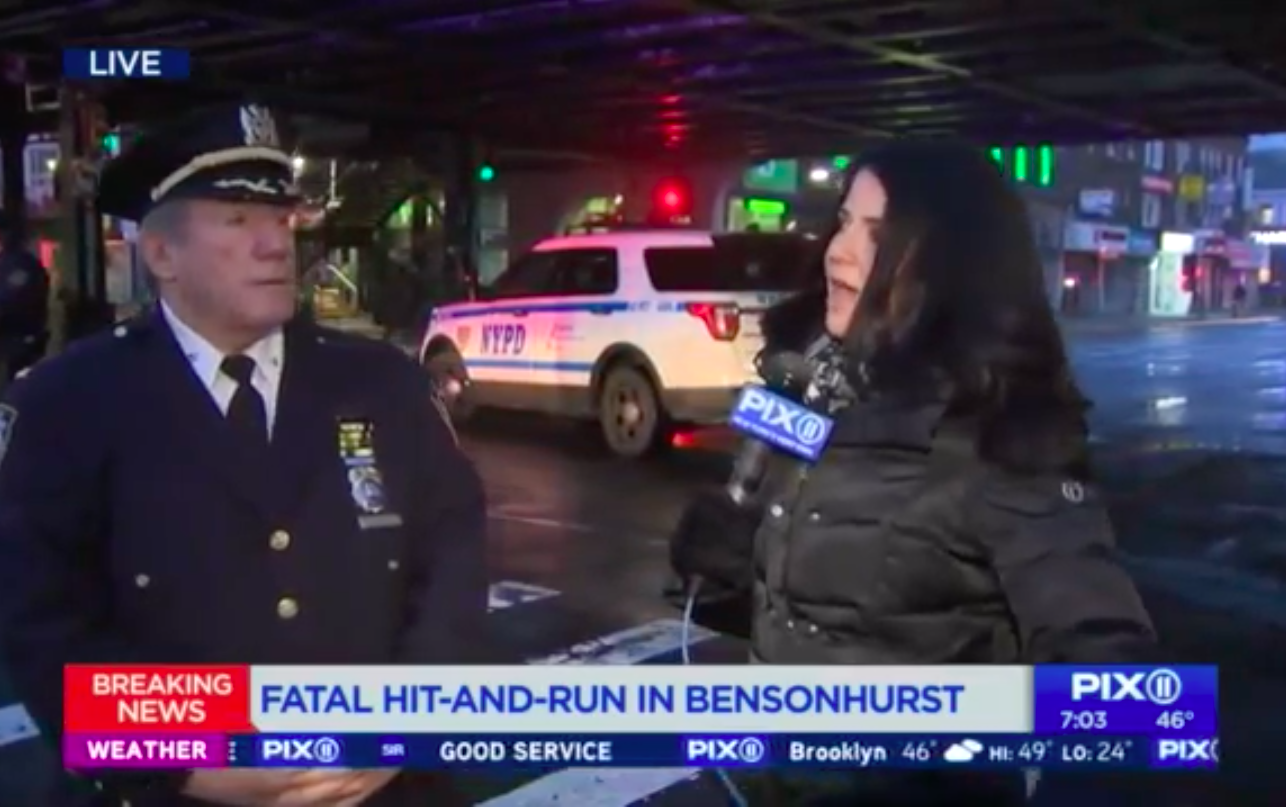A top law enforcement official said last week that one of the roles of his job is to get cops to stop blaming victims of fatal crashes — an ongoing issue within the NYPD that demoralizes victims, further devastates already heartbroken families, and preemptively shapes a narrative about what happened in the crash.
It’s become so prevalent that prosecutors are asking them to stop, said Ronald Snyder, the deputy chief in the Brooklyn District Attorney's Street Safety Bureau, which was created in July.
“I have had conversations with these high-ranking members of the police department about this issue. It is an ongoing conversation,” Snyder said during this year’s all-digital Transportation Alternatives’ Vision Zero Cities conference last week.
Typically, members of the NYPD’s Collision Investigation Squad, which is part of the police department’s Highway Unit, show up to the scene of fatal crashes. But they’re forbidden from sharing information with the press or public, said Snyder, during the panel discussion on “Victim Blaming: How Media Narratives Can Undermine Efforts to Eliminate Traffic Deaths.”
Instead, information must go through the NYPD’s Deputy Commissioner of Public Information, also known as the press office, where crash details get disseminated through what’s called “sheets.”
But the sheets regularly lack any substantial information about the driver’s indiscretions, while often putting the fault on the dead or injured pedestrian or cyclist — like claiming the victim had gone through a red light, or crossed outside the crosswalk.
Snyder says he’s trying to tackle the issue with police brass.
“I work primarily with Highway and the Collision Investigation Squad. This issue in particular also hits on the NYPD’s Transportation Bureau and press office at NYPD. My direct contact is in Highway Patrol and CIS, and through them I’m working my way to the press office. Once I have a conversation with all the people together, we can sort out in what ways we can improve disseminating information to the public about crashes,” said Snyder.
The NYPD has a history of blaming victims of fatal crashes — last October, police initially blamed 62-year-old MD Abul Bashar for his own death, claiming he was riding his e-bike on the sidewalk when he was run over and killed by a private sanitation truck driver in Gowanus. But cops later secretly amended the official police report to say Bashar was actually doing what he was supposed to be doing — riding on the street and traveling with a green light — when he was fatally run over.
Last July, cops similarly blamed 20-year-old cyclist Robyn Hightman for their own death, too, telling Gothamist that maybe they would still be alive if they had used the bike lane.
And in January, in a rare instance of NYPD brass speaking publicly about fatal crashes, Deputy Chief Charles Scholl of Patrol Borough Brooklyn South blamed two women for their deaths just hours apart, telling mainstream media outlets that they had not been “careful” before the wheels of multi-ton vehicles rolled over their bodies.
During the panel discussion, the mother of 7-year-old Shevon Bethea, who was killed by the driver of an MTA bus in the Bronx in 2018, recounted how cops questioned her about her son’s ADHD diagnosis, which only intensified her pain, making her feel as if police were blaming her and her young child for his death.
“Those questions were so inappropriate at the time...blaming my son for the crash. It’s imperative we put a stop to this,” said Nickya Wittington.
The victim-blaming also instills in the mainstream media, and then the public, the notion that crashes are not the result of an entirely avoidable series of mistakes or rash moves by a driver, but just a tragic "accident" or, worse, the fault of a victim. This plays an outsized role in reducing the imperative among the political class to fix our streets.
Nickya Wittington of Families for Safe Streets (@NYC_SafeStreets) shares the story of her son's fatal crash and the additional pain of inappropriate victim-blaming questions from the NYPD. "Nobody knows the pain of a parent" who has lost a child to traffic violence.
— Transportation Alternatives *Vote on Sammy's Law* (@TransAlt) October 22, 2020
The NYPD did not immediately respond to a request for comment.






